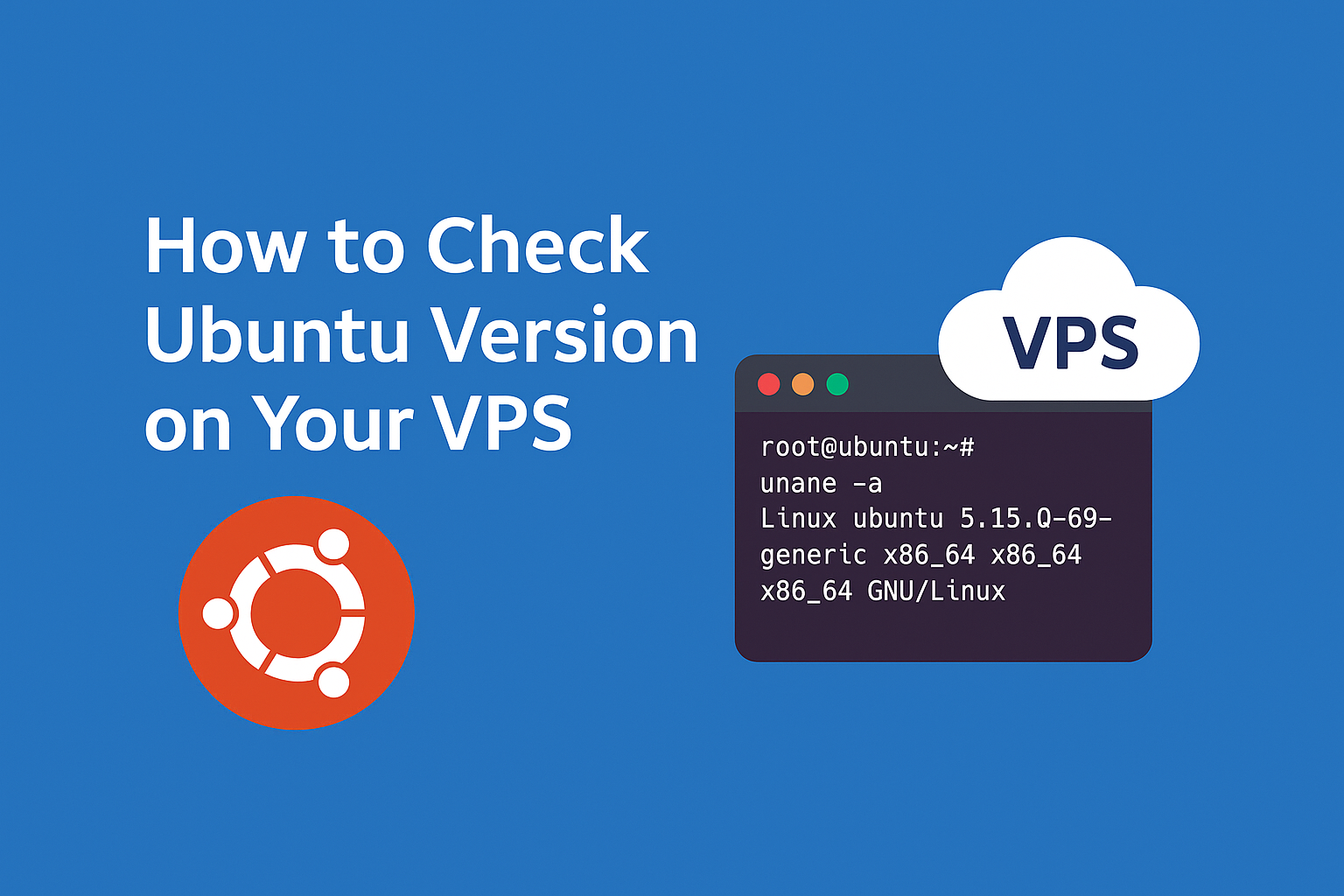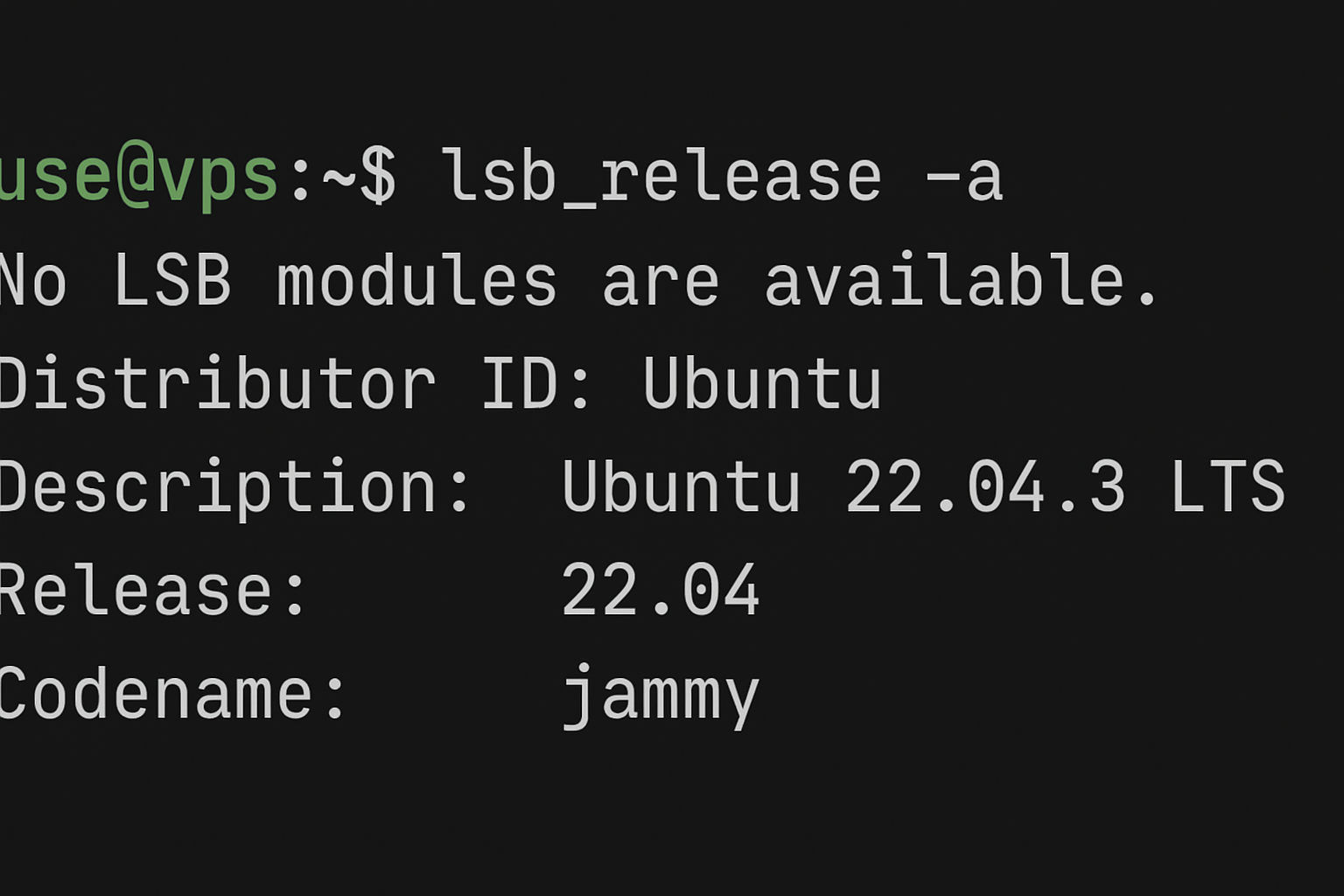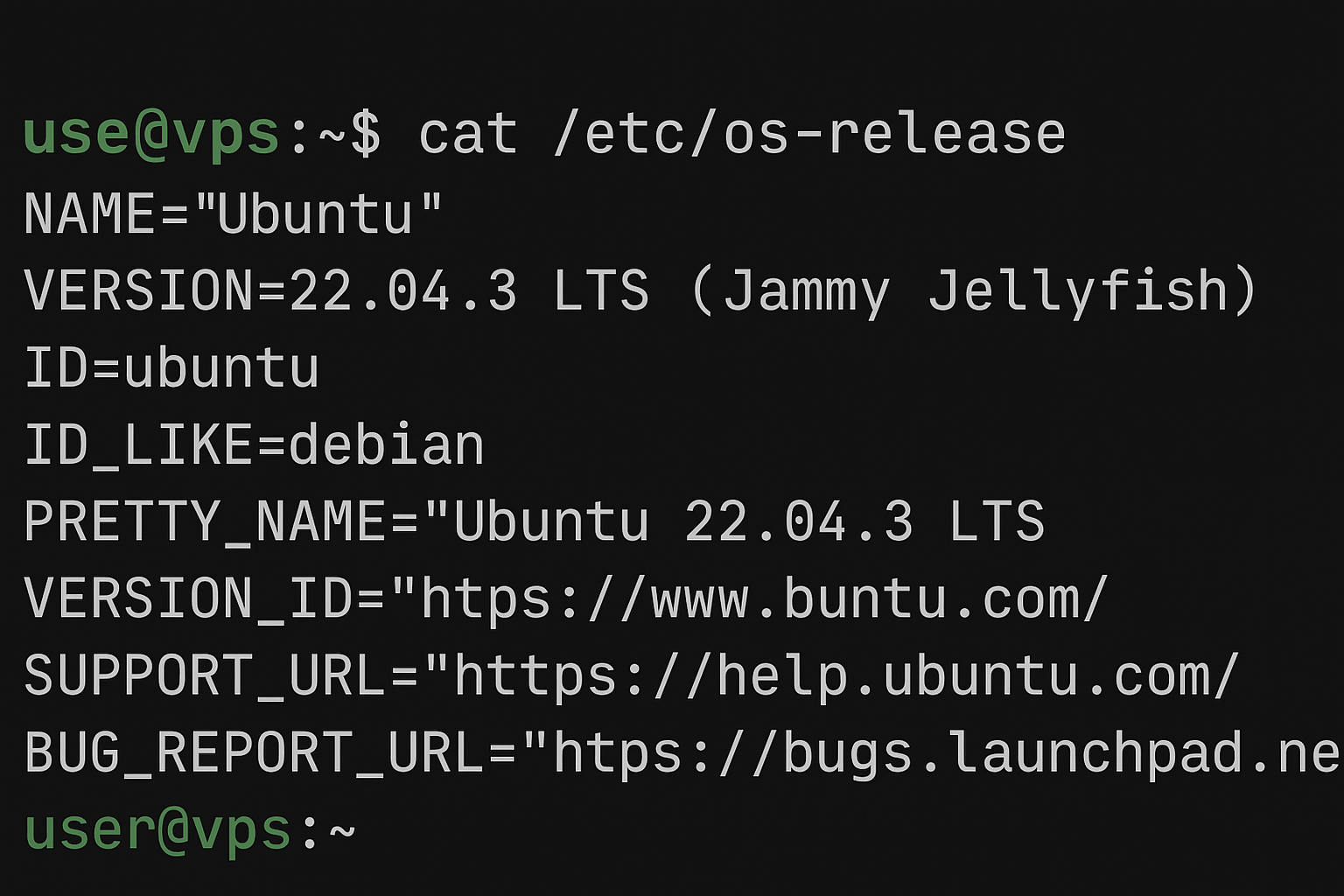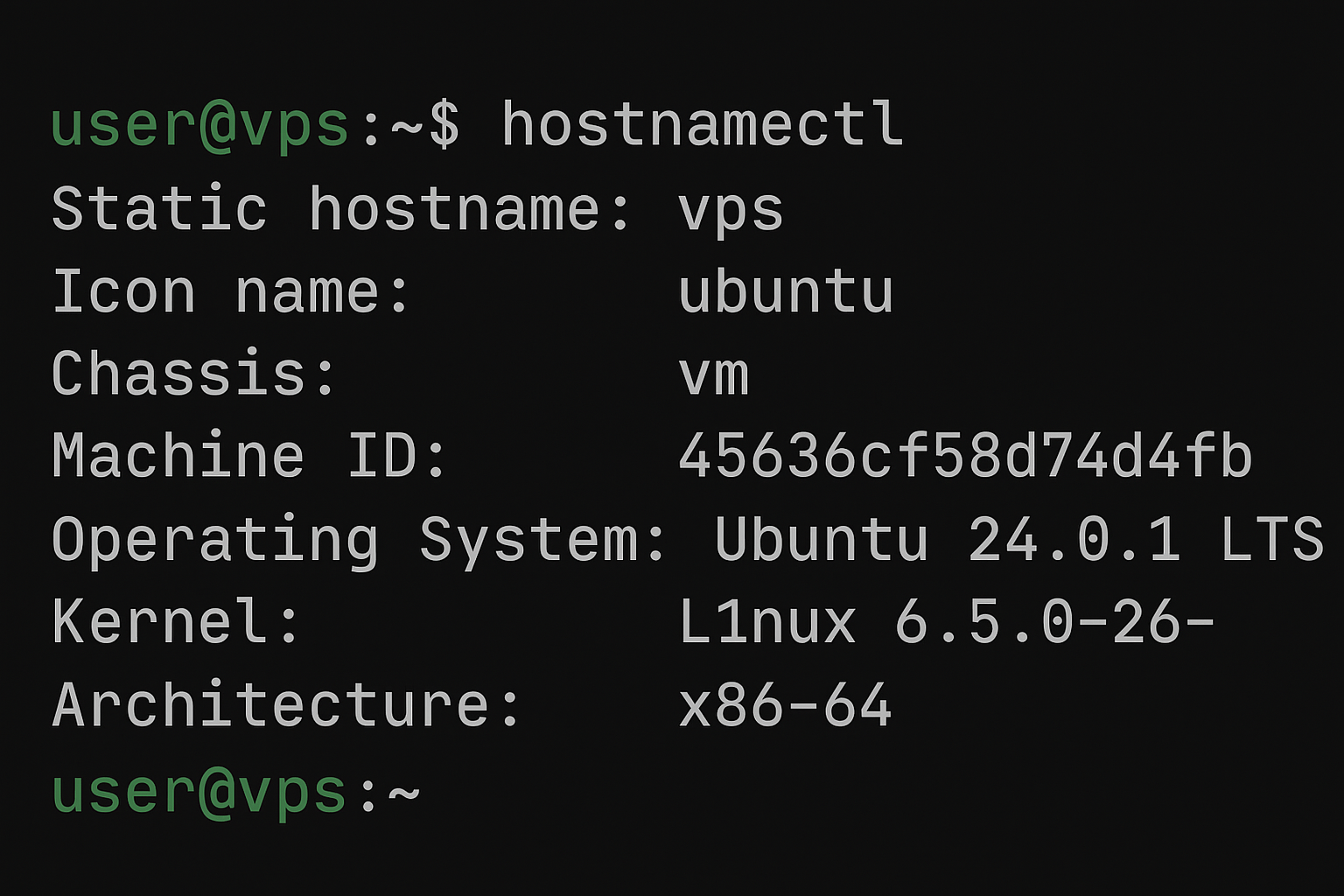
How to Check Ubuntu Version on Your VPS (Quick & Complete Guide)
Contents
- Introduction
- Why It’s Important to Know Your Ubuntu Version
- 3.1 Using the lsb_release Command
- 3.2 Using /etc/os-release File
- 3.3 Using hostnamectl Command
- 3.4 Using cat /etc/issue
- How to Check Ubuntu Version in Desktop GUI
- How to Find Kernel and System Details
- Automating Ubuntu Version Check (Script Example)
- Common Problems and Fixes
- Tips for Managing Multiple VPS Systems
- Example Output Comparison Table
- Conclusion
Introduction
When managing a VPS running Ubuntu, knowing your exact operating system version is one of the first things you should verify. Your Ubuntu version determines what software is compatible, what repositories are available, and whether your system is still receiving official security updates.
In this guide, you’ll learn multiple methods on how to check the Ubuntu version on your VPS — both from the command line and through a graphical interface if you use one. This guide is suitable for developers, system administrators, and beginners alike.
Why It’s Important to Know Your Ubuntu Version
Understanding your Ubuntu version helps you avoid compatibility issues, perform safe updates, and follow tutorials correctly. Here are the main reasons:
– **Software Compatibility** – Some packages or frameworks require specific versions of Ubuntu.
– **Security Maintenance** – Only supported versions receive security patches.
– **Upgrade Planning** – You’ll know when to plan a system upgrade before the end-of-life (EOL).
– **Accurate Documentation** – Commands vary slightly between releases, so knowing your version helps avoid errors.
– **System Auditing** – In environments with multiple VPS servers, version tracking is part of compliance and monitoring.
3.1 Using the lsb_release Command
The `lsb_release` command is the easiest way to get Ubuntu version details. Run:
“`bash
lsb_release -a
“`
Example Output:
 If the command is missing, install it:
If the command is missing, install it:
bash
sudo apt update && sudo apt install lsb-release -y
This method works across all Ubuntu versions, including minimal servers and cloud VPS images.
3.2 Using /etc/os-release File
This method reads version information from a file that exists on every Linux system. Run:
“`bash
cat /etc/os-release
“`
Example Output:

This approach is lightweight and reliable for automation or scripting purposes.
3.3 Using hostnamectl Command
`hostnamectl` not only displays the hostname but also key OS information:
“`bash
hostnamectl
“`
Example Output:

It’s particularly useful when you want to see the Ubuntu version and kernel details together.
3.4 Using cat /etc/issue
This simple command prints a short system identification message.
“`bash
cat /etc/issue
“`
Output:
Although minimal, this method is often used in login messages or banners.
How to Check Ubuntu Version in Desktop GUI
If you’re running Ubuntu Desktop on a VPS (via VNC or remote desktop), you can find the version using:
1. Click on the **Settings** icon.
2. Go to **About** or **Details**.
3. Look for the **OS Name and Version** section.
This approach is beginner-friendly, though not common for servers.
How to Find Kernel and System Details
The kernel version provides additional insight about your system. Use:
“`bash
uname -r
“`
Output:
“`
5.15.0-105-generic
“`
To view full system information:
“`bash
uname -a
“`
Or check the kernel package info:
“`bash
cat /proc/version
“`
These commands help identify low-level system configurations useful for troubleshooting drivers or kernel modules.
Automating Ubuntu Version Check (Script Example)
You can automate Ubuntu version detection using a simple Bash script.
Create a file called `check_ubuntu_version.sh`:
```bash
#!/bin/bash
echo "Checking Ubuntu Version..."
if [ -f /etc/os-release ]; then
. /etc/os-release
echo "You are running $PRETTY_NAME"
else
echo "Cannot detect Ubuntu version."
fi
```
Make it executable and run:
```bash
chmod +x check_ubuntu_version.sh
./check_ubuntu_version.sh
```
This is especially helpful for DevOps engineers managing multiple VPS instances.
Common Problems and Fixes
| Problem | Cause | Solution |
|———-|——–|———–|
| `lsb_release: command not found` | Missing package | Run `sudo apt install lsb-release -y` |
| `/etc/os-release` not found | Damaged base-files | Reinstall `base-files` package |
| Wrong version info | Cached or outdated info | Reboot and check container host |
| Permission denied | Limited user rights | Add `sudo` before commands |
Tips for Managing Multiple VPS Systems
If you’re managing multiple Ubuntu VPS servers, manually tracking OS versions becomes impractical. Here are a few tips:
– Use **Ansible** or **SaltStack** to gather version info remotely.
– Store results in a **central inventory file or dashboard**.
– Schedule automated weekly checks to ensure consistency.
– Combine version info with system uptime and security patch level for full monitoring.
Example Output Comparison Table
| Method | Command | Output Type | Best Use |
|——–|———-|————–|———–|
| `lsb_release -a` | Command | Full release info | Most common |
| `/etc/os-release` | File | Key/value pairs | Scripts |
| `hostnamectl` | Command | OS + Kernel | System overview |
| `/etc/issue` | File | Minimal info | Login banners |
Conclusion
Knowing how to check the Ubuntu version on your VPS is an essential skill for smooth Linux administration. Whether you’re deploying software, auditing systems, or planning upgrades, these simple commands ensure your environment remains consistent and secure.
Always verify your Ubuntu version before performing updates or installing major software. Doing so prevents dependency errors and saves hours of troubleshooting later.
**Pro Tip:** Automate this process if you manage multiple servers. Even a one-line script can give you quick visibility into your infrastructure.

